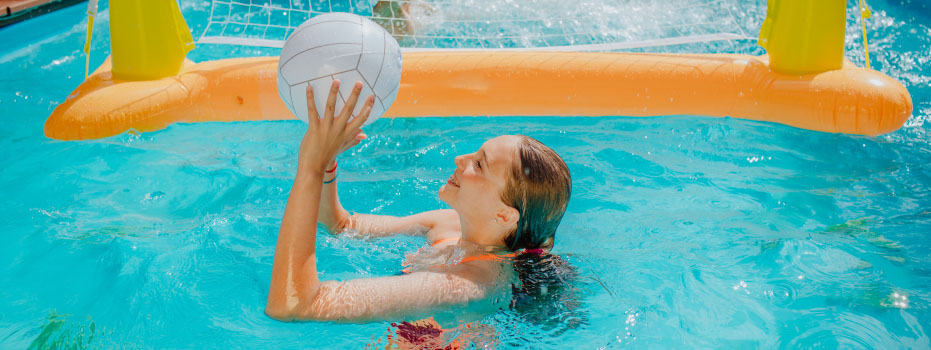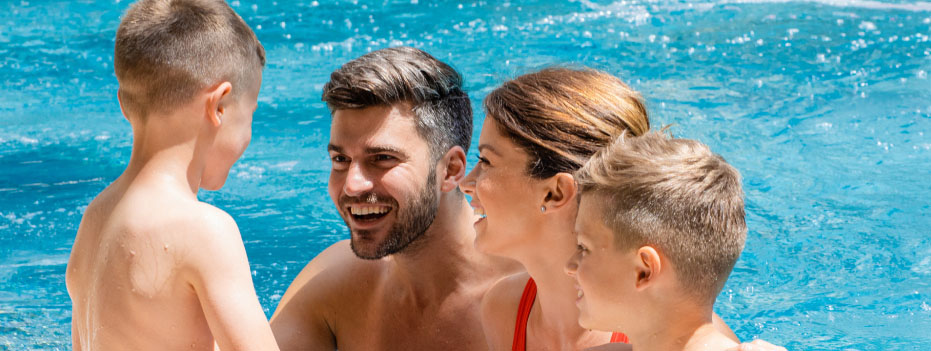Prepping Your Fibreglass Pool For Summer
If you've not used your pool at all during winter, then you'll need to prepare it before you can start using it again in summer. Let's find out all about preparing your fibreglass pool for summer!

Summer is on the way, which means that the season you’re most likely to make use of your pool is coming. People enjoy socialising, throwing parties, or even relaxing around their fibreglass pools during the summer months. You could be thinking about throwing a barbecue in your backyard, where your friends and family can even enjoy taking a dip in the pool water.
During the winter months, you may have avoided using your pool altogether. It isn’t uncommon for pool owners to leave their fibreglass pools covered through the winter months. Some people, like those who have pool heaters, could continue to use their pool through the winter months.
1. Don't empty out the pool water
You could be thinking that the first thing you should do is to empty out the water in the fibreglass pool. This water has been stagnant in your pool through winter, so it must not be safe for swimming in. While this idea seems good, it can lead to you needing a replacement job done for your fibreglass pool.
This is as emptying the pool water out all at once can affect your pool’s structural integrity. If this happens, then this could lead to your pool popping out of place. Then, you’ll need to call the pool installer again and get them to refit your fibreglass pool. This is why the water in the pool shouldn’t be emptied out at once.
2. Cleaning the pool
You’ll also need to clean any dirt, debris or foreign contaminants out of your pool. If you haven’t run your pool’s filter or circulation system through the winter months, then you’ll first need to check on those. Clean your pool filter, and ensure that there isn’t any debris stuck in it. Your pool can have different kinds of filters, and you’ll need to know how to clean out your particular filter. Usually, you’ll need to backwash the filter in order to clean it. You’ll also need to clean the skimmer basket.
You will also need to manually get rid of any dirt, debris, leaves, branches and other foreign contaminants that may have made their way into your pool. You will need a net that can help you clean these foreign contaminants out. After you’ve carefully drained out the water in your pool, you’ll need to brush the sides of the pool, as well as the bottom.
This is as dirt and sludge could have accumulated in these areas over winter. This is why you’ll need to carefully scrub your fibreglass pool clean, in order to ensure that you can then use it.
Check out whether or not your backyard is suited for a swimming pool!

3. Checking the pool pump
It’s important to check to ensure that all the components of your fibreglass pool are in working order. And the most important of these is the pool pump. Before using the pool, ensure that all its components are working fine. At this point, you could also consider upgrading your pool system, if you haven’t already. You may also have found some inconsistencies while you were working, that could signify that repair is needed.
If you have any questions regarding your pool pump, then you’ll need to call your pool technician. In case you don’t know how to check your pool pump, you can also call a pool technician to come and inspect it for you. There are many plumbing decisions that are quite affordable as well. A plumbing technician can help you ensure that you don’t go over your budget when fixing your pool pump.
Concrete pools can take months to install – but fibreglass pools can take a lot less time. See just how much!
4. Adding pool chemicals
You should never use your fibreglass pool after it’s been stagnant for a long period, without checking the pool water chemistry first. This is as stagnant water is the perfect breeding ground for algae as well as bacteria. Go to your nearest pool store and buy pool water testing kits.
Check to see whether the pH level of your pool is within the right range or not. If there are algal blooms in your pool, then you may need to call in a professional pool cleaner. Algal blooms are often indicated by the cloudy colour of the pool water. There are specific pool chemicals you can buy that help remove algal blooms. You can even think about getting rid of the algae yourself, but make sure that you do a thorough job so that the algae doesn’t come back.
Eventually, when the pool is clean, you’ll want to fill your pool with fresh water. Now, you’ll need to test the pH level of your water again, to ensure that the pool water is balanced. If it isn’t, then you’ll need to add the right pool chemicals, in order to ensure that your fibreglass pool is ready for use.

5. Checking for leaks and cracks
At least once every year, you should consider checking your fibreglass pool to see if there are any cracks in it. You may not notice any cracks that are visible, but it’s important to monitor your pool nonetheless. When you’re cleaning your fibreglass pool and preparing it for summer, it could be the perfect time to check for leaks and cracks.
There could also be times when you notice that the water level of your pool is decreasing, even when there aren’t any cracks that are visible. This most often indicates a leak and a professional pool installer will need to look for it. Detecting leaks in fibreglass pools can be seen as a science that is exact, which is why you need the help of professionals who are trained. Professionals will also have the right tools with them, that will help them ensure that they can detect and fix any leaks in your fibreglass pool.
Swimming pools can be good investments, see why here!
Conclusion
You’ll need to get your fibreglass pool summer ready before you can start using it. From cleaning the pool out to checking the water balance of the pool, there are five key things that you need to do before you start using your pool. Use this guide to find out what they are.

